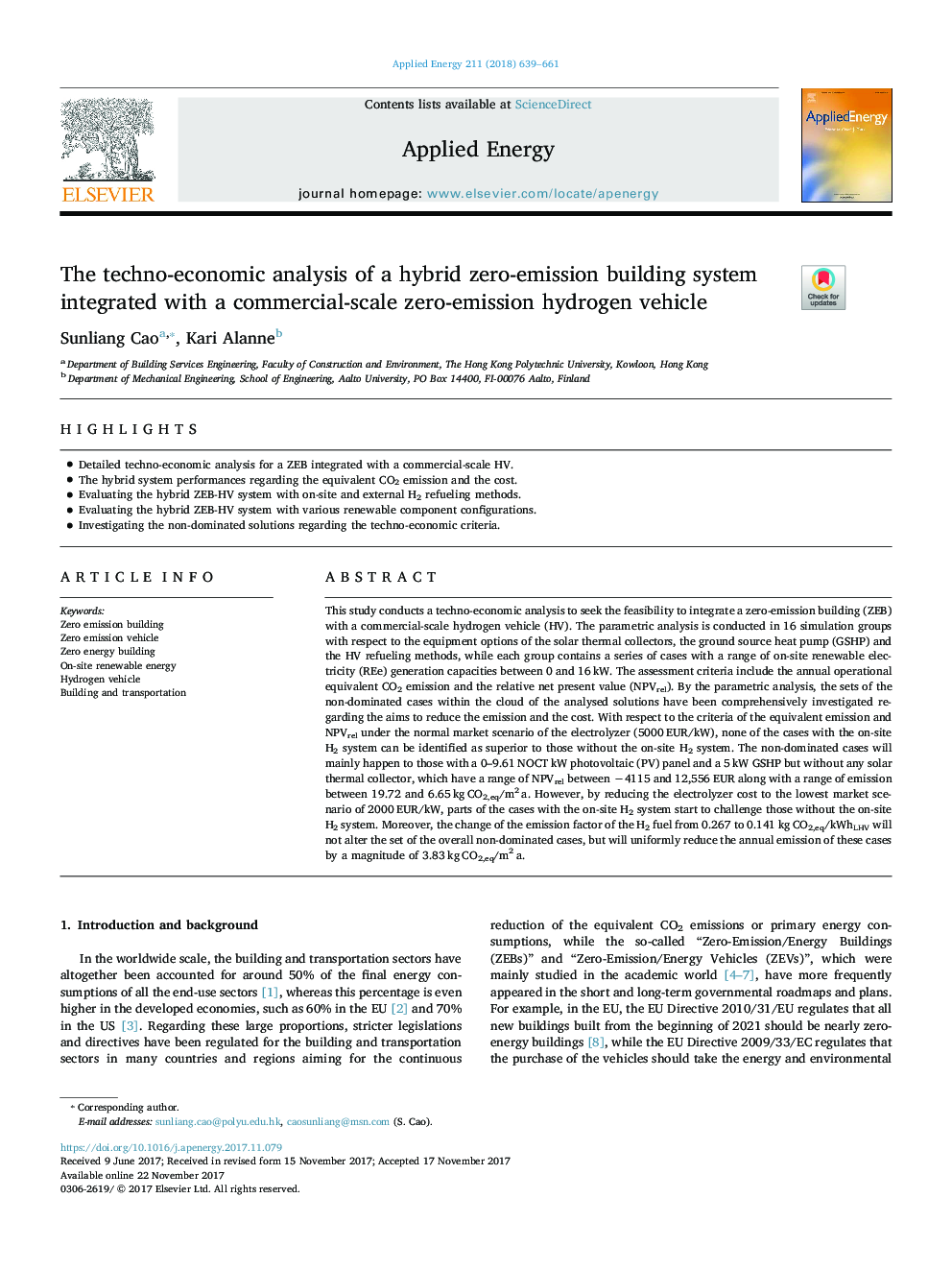| Article ID | Journal | Published Year | Pages | File Type |
|---|---|---|---|---|
| 6681311 | Applied Energy | 2018 | 23 Pages |
Abstract
This study conducts a techno-economic analysis to seek the feasibility to integrate a zero-emission building (ZEB) with a commercial-scale hydrogen vehicle (HV). The parametric analysis is conducted in 16 simulation groups with respect to the equipment options of the solar thermal collectors, the ground source heat pump (GSHP) and the HV refueling methods, while each group contains a series of cases with a range of on-site renewable electricity (REe) generation capacities between 0 and 16â¯kW. The assessment criteria include the annual operational equivalent CO2 emission and the relative net present value (NPVrel). By the parametric analysis, the sets of the non-dominated cases within the cloud of the analysed solutions have been comprehensively investigated regarding the aims to reduce the emission and the cost. With respect to the criteria of the equivalent emission and NPVrel under the normal market scenario of the electrolyzer (5000â¯EUR/kW), none of the cases with the on-site H2 system can be identified as superior to those without the on-site H2 system. The non-dominated cases will mainly happen to those with a 0-9.61â¯NOCTâ¯kW photovoltaic (PV) panel and a 5â¯kW GSHP but without any solar thermal collector, which have a range of NPVrel between â4115 and 12,556â¯EUR along with a range of emission between 19.72 and 6.65â¯kgâ¯CO2,eq/m2â¯a. However, by reducing the electrolyzer cost to the lowest market scenario of 2000â¯EUR/kW, parts of the cases with the on-site H2 system start to challenge those without the on-site H2 system. Moreover, the change of the emission factor of the H2 fuel from 0.267 to 0.141â¯kgâ¯CO2,eq/kWhLHV will not alter the set of the overall non-dominated cases, but will uniformly reduce the annual emission of these cases by a magnitude of 3.83â¯kgâ¯CO2,eq/m2â¯a.
Related Topics
Physical Sciences and Engineering
Energy
Energy Engineering and Power Technology
Authors
Sunliang Cao, Kari Alanne,
